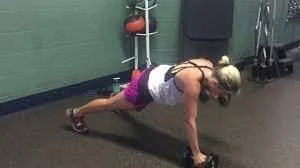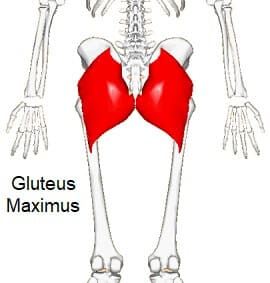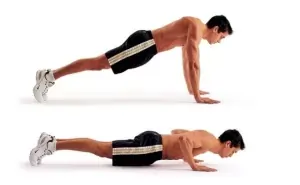Renegade Rows
Renegade rows are a powerhouse compound exercise that combines the benefits of rowing and core stability. They’re a favorite among athletes, fitness enthusiasts, and anyone aiming to boost functional fitness. From their unique benefits to proper execution tips, here’s everything you need to know about this dynamic movement.
Table of Contents
What Are Renegade Rows?
Renegade rows blend a plank with a dumbbell row. In this exercise, you hold a plank position while alternately rowing a dumbbell with each hand. This not only builds upper body strength but also enhances core stability and balance.
Muscles Worked in Renegade Rows
Renegade rows engage several muscle groups, including:
- Latissimus Dorsi (lats): Activated during the rowing motion.
- Trapezius and Rhomboids: Strengthened as you retract your shoulder blades.
- Biceps: Engaged during the pulling phase.
- Core Muscles: Stabilize the torso.
- Shoulders: Assist with stability and movement.
- Chest and Serratus Anterior: Support the plank position.
Benefits of Renegade Rows
- Core Stability: The plank position targets your abs, obliques, and lower back.
- Functional Strength: Mirrors real-life pulling motions, improving upper-body power.
- Coordination and Balance: Enhances stability through its asymmetrical movement.
- Efficient Full-Body Workout: Works multiple muscle groups simultaneously.
- Posture Improvement: Strengthens the back and core, countering the effects of prolonged sitting.
How to Perform Renegade Rows
Equipment Needed
- Two moderate-weight dumbbells (hex-shaped for better stability).
- A stable, flat surface.
Step-by-Step Guide
- Set Up the Starting Position
- Place the dumbbells shoulder-width apart on the floor.
- Assume a plank position, gripping the dumbbells. Keep your shoulders stacked over your wrists and your feet slightly wider than hip-width for stability.
- Engage Your Core
- Squeeze your glutes and tighten your core.
- Prevent your hips from sagging.
- Row the Dumbbell
- Lift one dumbbell toward your waist, keeping your elbow close to your body. Focus on retracting your shoulder blade instead of relying solely on your arm.
- Lower with Control
- Slowly lower the dumbbell back to the ground.
- Switch Arms
- Repeat the row with the opposite arm, keeping your body steady throughout.
- Repeat
- Perform 10–15 reps per side
- 3–4 sets.
Renegade Rows Video
Common Mistakes to Avoid
- Hips Rotating or Sagging: Keep hips square to the ground. Widen your stance if needed.
- Poor Plank Form: Avoid arching your back or letting your hips drop to prevent lower back strain.
- Using Momentum: Row slowly and with control to target muscles effectively.
- Holding Your Breath: Maintain steady breathing for better stability and endurance.
Modifications and Variations
- Beginner-Friendly: Skip the dumbbells and lift your hands alternately while maintaining a plank.
- Progress with Weight: Increase dumbbell weight as you grow stronger.
- Push-Up Combo: Add a push-up between rows for extra chest and tricep activation.
- Single-Arm Variation: Perform the row with one hand on the floor for an added balance challenge.
Safety Tips
- Warm up properly before starting.
- Use a weight that allows you to do the correct form.
- Focus on controlled movements to reduce injury risk.
- Stop immediately if you feel any pain.
Conclusion
Renegade rows are a versatile, full-body exercise that builds strength, balance, and stability. Whether you’re just starting your fitness journey or are an advanced athlete seeking a challenge, this movement can be tailored to your goals. Add renegade rows to your workout routine to unlock their powerful benefits and take your fitness to the next level.
FAQs
Full-body movements known as “renegade rows” work the obliques, rhomboids, and triceps, as well as the core muscles. Renegade rows can strengthen the upper body while enhancing stability and balance if done correctly.
Because it works numerous muscles at once, the Renegade Row is a challenging full-body exercise. A tight core is necessary for the beginning position of a plank, which tests your stability and core strength.
If your feet are too broad and your hands are too much in front of your shoulders, you’ll find it difficult to maintain your stability during the row.
The Renegade Row and the Dumbbell Plank Row both begin with the same body position and use your entire body to perform the row motion. However, a renegade row involves doing a full pushup right after the rowing part.
Supposedly so because, given women’s hybristophilia, the person who invented the lift was more focused on making it seem evil than on making it hypertrophic.







